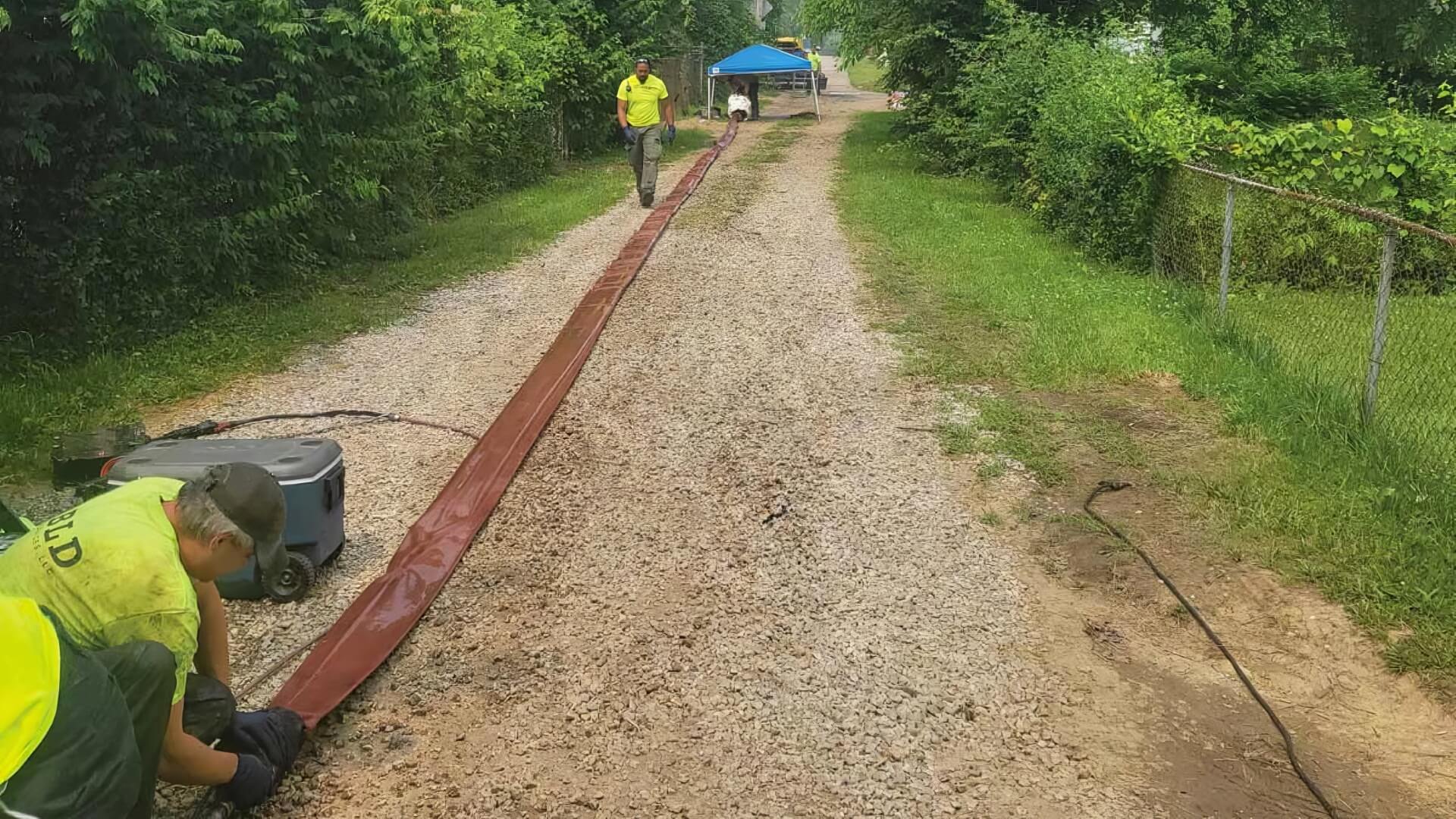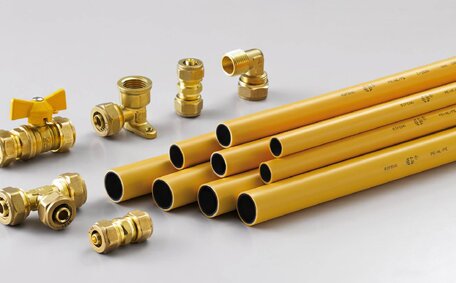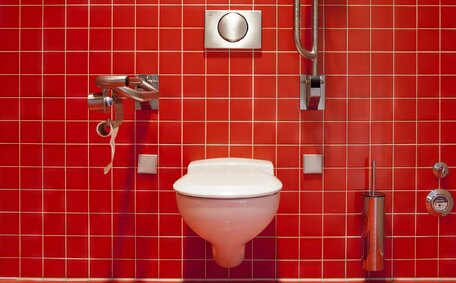Introduction to blocked drains in rental properties
Blocked drains pose significant challenges in rental properties, affecting both tenants and landlords. When a drain gets clogged with food scraps, hair, grease or other debris, water backs up and flooding can occur around your home. This leads to unsanitary conditions, property damage, and angry tenants.
Determining who is responsible for a blocked drain in a rental property should be clarified in the lease agreement, as it is often a grey area.
This listicle outlines the responsibilities surrounding blocked drains in rentals, shedding light on an often contentious issue. We’ll examine relevant tenancy laws, typical lease clauses, and examples of blockages tenants vs. landlords must fix.
Whether you’re a renter or property manager, you’ll learn the standards and procedures to follow when dealing with clogged drains.
Defining key responsibilities around plumbing and drainage
When it comes to plumbing and drainage systems in rental properties, there is an important distinction between landlord and tenant obligations that must be understood. According to industry standards and regulations, landlords are ultimately responsible for ensuring the overall functionality and maintenance of plumbing fixtures, pipes, and drains on your property.
Property owners are generally accountable for:
- Ensuring the water system, including all plumbing and fixtures, is in proper working condition at the beginning of a tenancy
- Conducting any necessary repairs or replacements for broken or faulty pipes, taps, toilets etc
- Clearing severely blocked drains requiring professional drain cleaning equipment
- Fixing leaks or burst pipes inside walls or under floors
- Maintaining exterior drains and sewer systems to mitigate potential blockages.
Tenants, on the other hand, are often responsible for day-to-day drain care and reporting issues, including:
- Basic drain care like avoiding pouring fats or harsh chemicals down the drain
- Clearing minor blockages in bathroom sinks or tubs
- Reporting any leaks, damage or faults to the landlord promptly
- Covering costs for damages caused by tenants or guests
Understanding the breakdown of plumbing and drain care duties is crucial. It ensures repairs are handled efficiently and prevents conflicts over financial liability. With shared understanding, plumbing issues can be rectified smoothly with tenants and landlords working collaboratively.
Landlord obligations for maintenance and repair
As outlined in residential tenancy laws and industry standards, landlords carry clear obligations concerning ongoing maintenance and necessary repairs for rental properties.
This duty encompasses resolving any property blockages utilising professional plumbing services. Landlords are typically responsible for covering costs to clear significant blockages requiring specialised equipment.
More specifically, key landlord requirements as outlined by Sydney Water around blocked drains include:
- Ensuring all wastewater drainage systems are fully functional at the property before new tenants move in, without any pre-existing blockages
- Promptly arranging repairs by a licenced plumber when notified of a significantly blocked drain or blocked sewer line
- Bearing costs for drain machine hire or services that cause blocked pipe cleaning or drain replacement if required to fix the issue
- Taking reasonable steps to prevent foreseeable drain blockages e.g. by installing drain screens
For multi-unit dwellings with shared wastewater infrastructure, landlords retain responsibility for sections of piping or drains up until the point connecting individual tenancies to the main sewer lines.
Landlords can prevent disputes and safeguard tenants from flooding and unsanitary conditions by maintaining their obligations regarding blocked drains.
Tenant duties to prevent damage and report issues
Tenants also carry important duties concerning appropriate use of the rental property’s drainage system. This includes taking reasonable care to avoid directly contributing to blockages and adhering to your landlord’s guidelines.
Tenants should uphold the following duties to prevent blocked drains:
- Avoiding pouring fats, oils, food waste or other debris down sinks or drains
- Installing drain strainers in sinks and baths to catch hair and particles
- Proper use of toilets for waste elimination and contacting plumbers for issues beyond rudimentary problems.
- Reporting any slow-draining water or early signs blocked drains might show promptly to the landlord/agent
- Arranging and covering minor clearing of blocked bathroom sinks/tubs where easily accessible
- Notifying the landlord immediately with details of any significant flooding or sewerage overflows
While landlords have legal obligations for significant repairs, tenants must exercise due care by not contributing to, or by addressing easily fixable blockages. This also means advising landlords quickly about serious plumbing issues before major damage can occur.
When both parties fulfil their drain maintenance responsibilities cooperatively, issues can be resolved effectively.
Identifying the underlying cause of a blockage
Determining the underlying cause of a blocked drain is an important first step before addressing the issue. This can clarify whether tenants contributed to the blockage through misuse or if faulty plumbing infrastructure is to blame.
Indications of tenant-induced blockages include:
- Recent pouring of cooking oils/fats down the drain
- Flow problems limited to one fixture (e.g. kitchen sink)
- Drain clogs following hosting of large gatherings
- History of previous minor clogs requiring sink plungers
Indications of structural drainage problems that require landlord repair include:
- Persistent bad odours or sewer gas smells from drains
- Water pooling, particularly around cleanout points or yard sinks
- Identical flow problems at multiple fixtures/drains
- Old metal piping subject to interior rust/corrosion
If the cause is unclear, a plumber can run a drain camera inspection to identify any breaches, cracks, root invasion or collapsed lines requiring repair.
Blockages caused by structural and system issues
Sometimes blocked drains are caused by issues beyond the reasonable control of tenants, such as structural faults, root invasion or general wear and tear.
Common drainage problems stemming from structural or systemic issues that landlords are responsible to remedy include:
- Collapsed or broken drain lines allowing debris build-up
- Cracked pipes or breaches allowing roots/silt to penetrate
- Outdated metal piping rusting and flaking internally over time
Landlords are responsible for clearing and repairing blockages caused by tree roots infiltrating damaged pipes. They would require professional drain jetting, root cutting or pipe relining services.
Landlords must rectify any pre-existing partial blockages within the drainage system prior to tenancy initiation. Allowing new tenants to unknowingly inherit plumbing problems fails basic property fitness standards.
Essentially, if reasonable tenant usage like washing, cleaning or cooking could not have caused or contributed to a severe blockage, liability falls back to the landlord for investigation and remedy.
Blockages caused by tenant misuse or negligence
In some cases, blocked drains are directly caused by inappropriate actions or negligence by tenants. This may shift responsibility for remedy and costs onto the tenants.
Common tenant behaviours that can result in drain blockages include:
- Pouring cooking oils and fats down sinks on a regular basis
- Flushing sanitary items, wet wipes or rubbish down toilets
- Allowing excessive hair, food scraps and other debris to enter drains
- Blocking or disconnecting existing drain screens, thus risking a severe drain your household might face
If a severe blockage is verifiably caused by tenant misuse, the tenants may be liable for the associated professional cleaning costs.
However, landlords must care all the while ensuring drainage systems are adequately designed and fitted with proper safeguards against foreseeable issues. For example, a landlord may still bear partial fault if drains lacked suitable screens or traps to help mitigate foreseeable build-up from household usage over time.
Responsibility is determined based on factors such as:
- - The assessed root cause of the blockage
- - Presence/absence of appropriate drain screens
- - Prior warnings or issues with the affected drains
- - Historical misuse issues at the property
By reviewing these factors, tenancy tribunals can make informed rulings about liability for remedy and repair costs if drain blockage responsibility is disputed.
Processes for addressing disagreements and disputes
If a disagreement arises between a landlord and tenant over responsibility for a blocked drain, there are recommended procedures both parties should follow to resolve the dispute.
Initially, tenants should provide formal written notification detailing the issue to the landlord or property manager. This creates a record of the problem while alerting the landlord promptly about a potential maintenance need.
Likewise, the landlord should arrange inspection by a licenced plumber to diagnose the drain and determine the likely cause based on factors like the drain’s history, condition, location and nature of the blockage.
If accountability is disputed, parties can approach state tenancy or fair trading departments or lodge a tribunal case. They will assess available evidence to make a binding ruling on liability for clearing costs.
Mediation offers a structured alternative to tribunals for resolving disputes. An impartial mediator facilitates discussion to negotiate a mutual agreement guided by industry regulations.
By following these processes professionally when disagreements over blockages occur, tenants and landlords can progress towards fair resolutions.
Using documentation to determine responsibility
Documentation is pivotal in establishing responsibility for rental property drain blockages. Tenancy agreements, property condition reports, maintenance logs and communications records can all assist in evidencing events, obligations and liability.
Key documents tenants and landlords should review when assessing accountability for drain blockages include:
- The tenancy agreement wording around plumbing repairs and drain clearance duties
- Ingoing and outgoing property inspection reports detailing drain condition
- Service records of past clearing or repairs required for the affected drains
- Notice letters from the tenant detailing issues over time
- Quotes or invoices from plumbers diagnosing causes
Tenancy tribunals utilise various written evidence to render informed decisions on liability for repair costs.
Accordingly, both parties should keep clear documentation trail concerning blockages. Photographic evidence can further clarify accountability by highlighting contributing factors or damage.
Good-faith negotiations and conflict resolution
When disputes arise over blocked drain responsibility, it is important for tenants and landlords to negotiate solutions in good faith through open communication and understanding.
Both parties should aim to:
- Discuss the issues respectfully without accusations
- Arrange prompt on-site drain inspections by plumbers
- Assess available evidence before determining liability
- Consider mediation if direct talks stall
- Understand obligations around repairs and drain care
- Compromise if responsibility is unclear or shared
Cooperation between tenants and landlords often results in fair financial solutions for drain issues, avoiding tribunals.
Responsibility can be complex to ascertain; should negotiations fail, consumer affairs departments provide formal dispute resolution.
Maintaining open and honest communication is key. Timely and clear discussion between landlords and tenants is essential to set expectations for proper drain usage and maintenance responsibilities.
Conclusion and final thoughts
Responsibility for fixing blocked drains in rentals depends on determining the root cause: tenant misuse or structural faults.
Where severe clogs result from tenant negligence through pouring fats or flushing debris, liability can transfer to tenants to cover professional drain cleaning costs. However, landlords retain responsibility for upgrades to prevent foreseeable issues.
Conversely, if blockages stem from tree root invasion, collapsed pipes or other exterior drainage faults, the landlord must cover rectification expenses to meet property fitness standards.
Open communication and thorough documentation reviews enable tenants and landlords to cooperatively ascertain accountability for blocked drain issues in many instances. However, tenancy tribunals remain an option if liability disputes escalate.
Ultimately, by understanding blocked drain responsibilities outlined here and taking proactive drain care steps, rental housing stakeholders can help minimise risks and resolve problems expediently.
Contact us via email or phone for further information or assistance from our experienced drain specialists.






